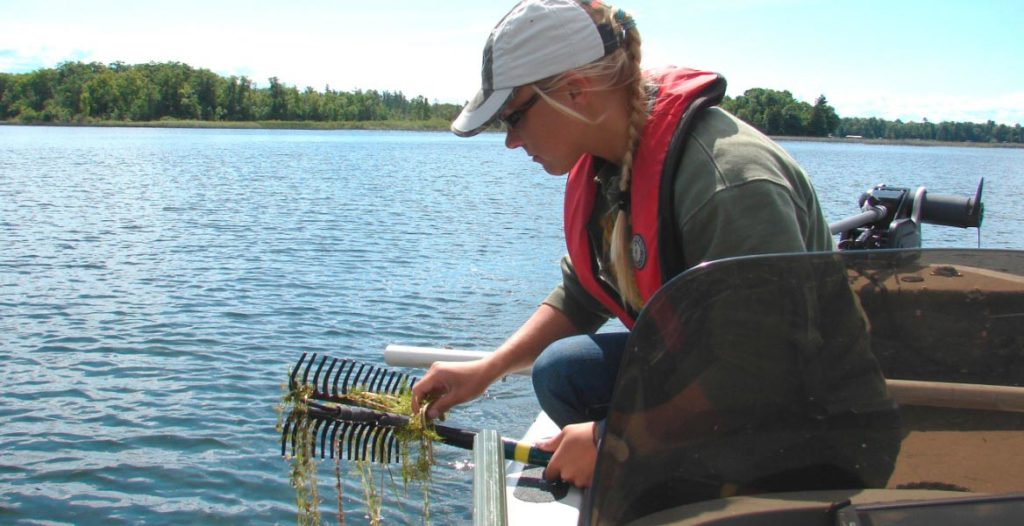
Lake Vermilion Invasive Vegetation Survey Begins
With starry stonewort and hybrid watermilfoil making headlines around Minnesota, the Vermilion Lake Association is accelerating its multi-year invasive vegetation inventory of Lake Vermilion. Specialists from RMB Environmental Laboratories (RMB) will be surveying our lake for 3 weeks in June and July.
RMB will be checking all high-risk locations, especially areas near public and private boat accesses, focusing on curly-leaf pondweed, starry stonewort, Eurasian watermilfoil, and hybrid watermilfoil. A byproduct of this work will be a comprehensive inventory of native vegetation.
Everett Bay has a small infestation of curly-leaf pondweed intermixed with vigorous native vegetation. The size of the infestation varies from year to year but does not appear to be expanding. Stuntz Bay and Wakemup Narrows also have a small amount of curly-leaf.
Starry stonewort – a relative newcomer to Minnesota’s AIS roster – has been found in 4 new counties and 7 new lakes, including Upper Red, Cass and Winnibigoshish, after its discovery in Lake Koronis in 2015. This grass-like macro algae can produce dense mats, can interfere with recreation, and can alter habitat for young fish. Starry has not been found in Lake Vermilion.
Hybrid watermilfoil also made the news in 2016. Little is known about crosses between invasive Eurasian watermilfoil and our native Northern watermilfoil, but anecdotal reports suggest increased invasiveness and evidence of herbicide resistance. In Lake Vermilion, native watermilfoil co-exists with other native vegetation. We have no known Eurasian watermilfoil – an indication our habitat and water chemistry may not be suitable. However, at this point, no one knows whether certain “Eurasian x native” hybrids may overwhelm our native vegetation.
Read eVermilion